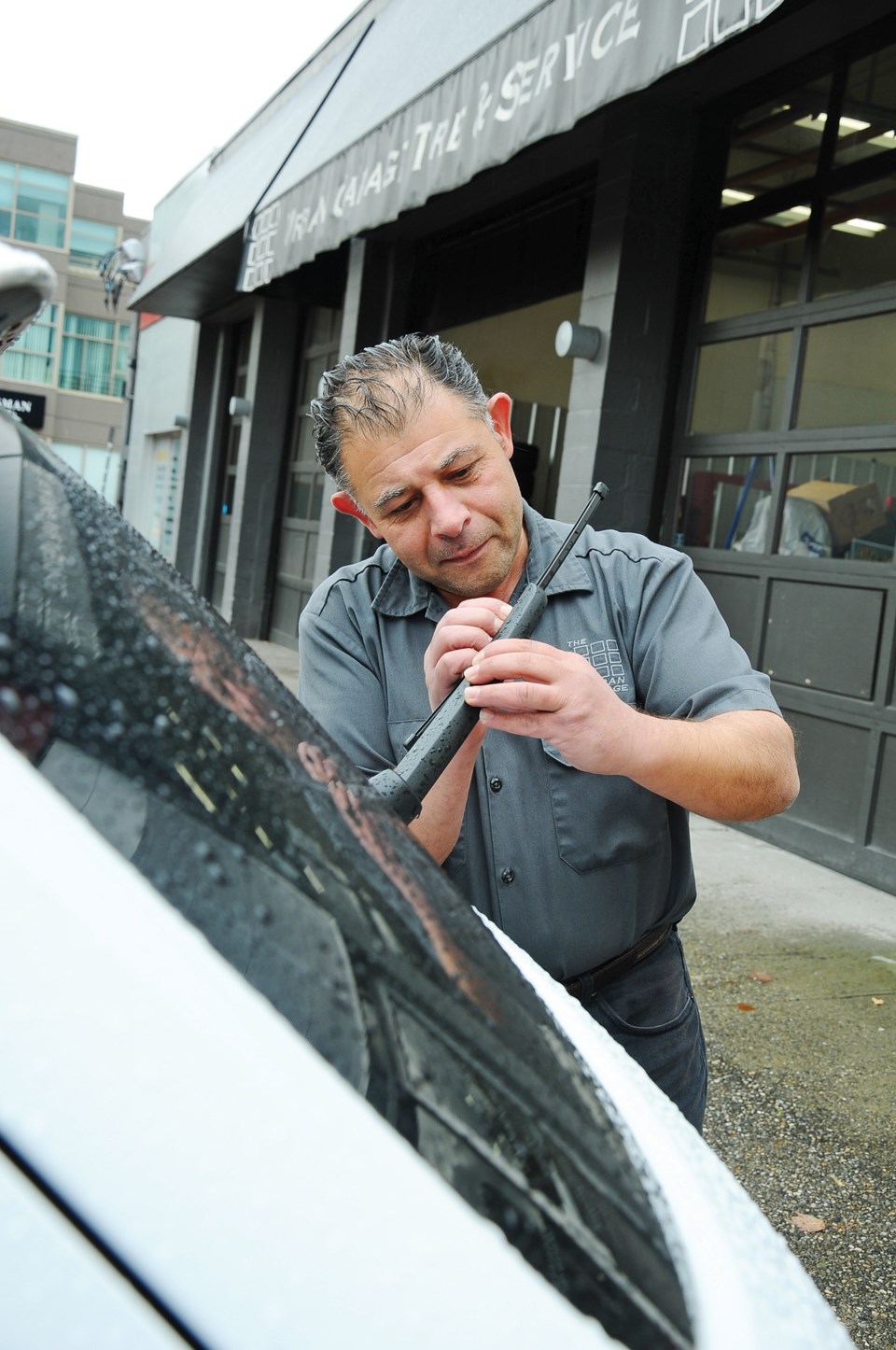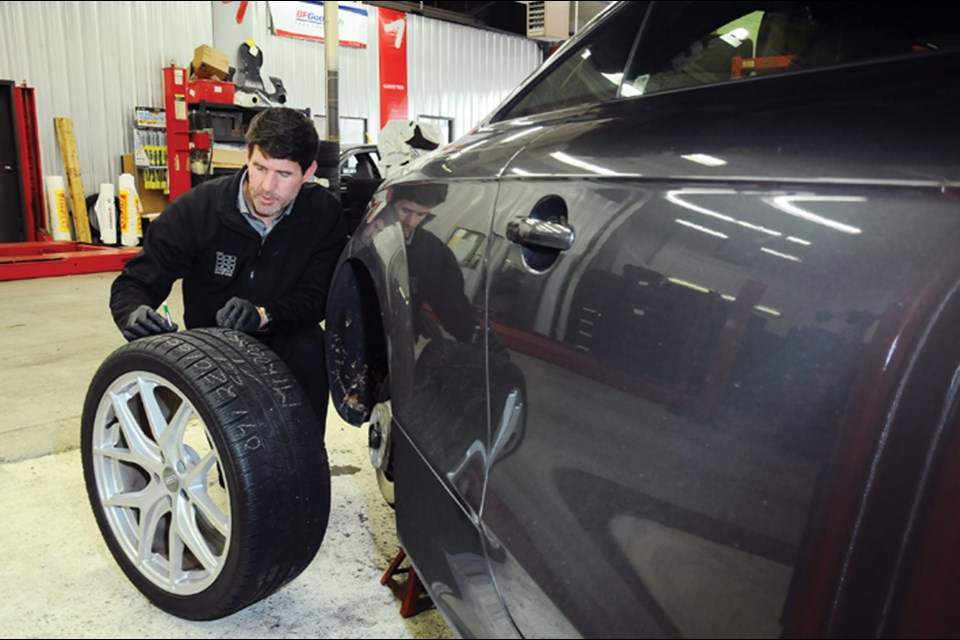Hockey fans may know that a hockey puck in summer is soft and pliable to the touch, but on the ice it becomes quite firm and rigid.
The same happens to car tires, and that’s why Duncan Pearce of The Urban Garage in West Vancouver recommends winter tires when the thermometer starts to drop.
“Winter tires are an investment in safety,” says Pearce. “I think when safety is involved there’s no cutting corners.”
He explains that typical summer and all-season tires are made of a compound that hardens as it gets cold. Winter tires perform better once the temperature dips below 7C, specifically with stopping distances and the ability of the tire to grip and turn.
“All-season tires are just tires made with the same compound as a summer tire but their tread patterns are designed to evacuate the water through the siping more rapidly and more efficiently so they tend to perform a little bit better in the wet,” explains Pearce.
Despite the North Shore being a fairly temperate zone, rotating summer or all-season to winter tires is a much safer choice for winter conditions because they grip the road better in cold temperatures. Buying a set of winter tires means spending money up front, but the investment may also extend the life of summer tires because they aren’t being used throughout the cold season.
“All-season tires are designed to be a compromise, and any time you compromise it’s kind of like being an all-rounder on a sports team: you’re never going to do anything the best. You’ll be OK at some things,” says Pearce. “When you try to design a tire to be all things it’s impossible.”
All-seasons won’t be the best grip in the dry summer but they will be better in the wet than a pure summer tire. Pearce calls them a “Jack of all trades, master of none.”
All-season tires, which most cars are sold with now, are “not bad” in a number of different areas, he says, adding: “By putting an all season tire on your car you’re kind of accepting OK performance but not the best performance.”
Optimal traction conditions happen in the dry heat of the summer, but in the winter tires really have to perform well.
“Tires are the single most important safety device on your car aside from your brakes,” says Pearce, noting they are the car’s only connection with the road.
Once tires lose traction basically your car is out of control, especially when braking or turning, he adds.
“They have a huge affect on the performance of a car. They’re your sole point of contact with the road,” says Pearce. “The biggest thing you can do to improve the performance of your car is to put a good set of tires on it. It’s the least expensive and most effective thing you can do to improve the performance of your car.”
Pearce, who founded his full-service (diagnostic, repair, and maintenance) garage in Ambleside in 1999, explains that it’s also important to keep tires in good working condition.
“An improperly inflated tire, if too low, will present more rolling resistance and will therefore consume more fuel to propel the car along the road,” he says, noting that can affect gas mileage.
An overinflated tire will not provide optimal traction and will wear improperly as it’s being used. Drivers should also keep an eye on the wear of the tire. On all tires there is a wear bar embedded in the tread. The tire has grooves with tread blocks that form the high point. The channels in between those tread blocks are the grooves and in the groove of every tire there’s a series of wear bars.
As the tire tread wears down the tread blocks will eventually become level with those recessed wear bars, and if that wear bar is equal in height to the tread block it means the tire is completely worn out. A tire gauge can also be used to determine wear by measuring the depths of the grooves.
Pearce recommends drivers take a look at their tires at least once every season. Spring and fall are good times to get prepared for extreme driving conditions, he adds, and says now is the time to get winter tires on rather than waiting for the first snowy, wet conditions to come around. October is the best month to put on winter tires, but there’s still time if it’s not already done.

Most tires will last between two and four seasons depending on a number of factors, including driving distances per year and driving style, says Pearce. For example, someone who drives aggressively and builds up a lot of force in the tires may cause the tires to scrub off on the road as opposed to someone who drives more gently (their tires may last longer).
Stop-and-go traffic can also affect tire wear as the transmission of force to the road will wear the tire more rapidly than driving along continuously.
This time of year drivers should check and repair tires, brakes, and wiper blades. Pearce explains that wiper blades are made of rubber and often degrade over the summer due to the effects of heat and UV. They are easy and cheap to replace, and are also an important safety feature of the car, especially in wet, snowy conditions.
Making sure the car’s heating system is working properly is also important to defrost the windshield and keep everyone in the car comfortable during the cold winter months.
This story originally appeared in the Car Care section of the paper, a special feature focusing on auto-related content.



